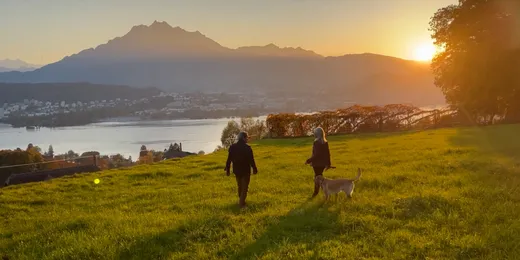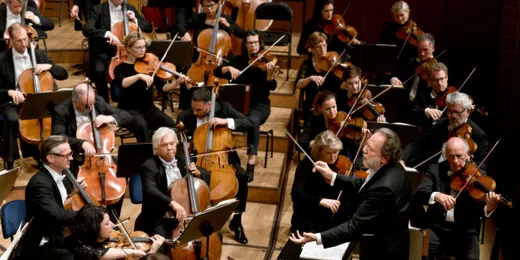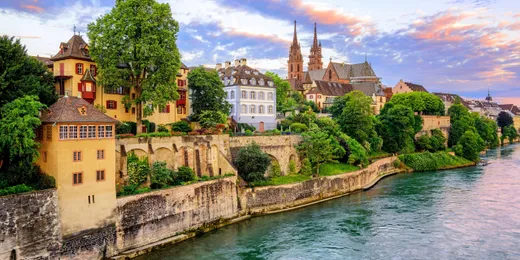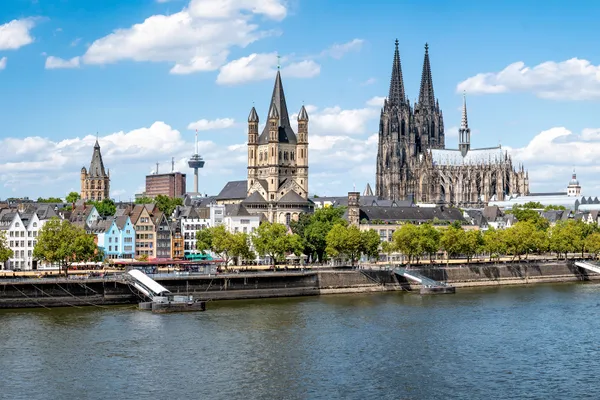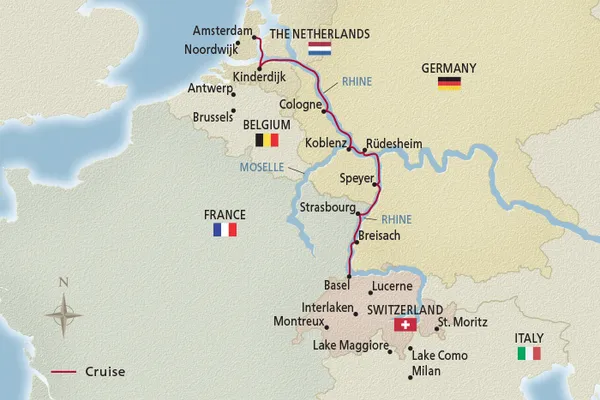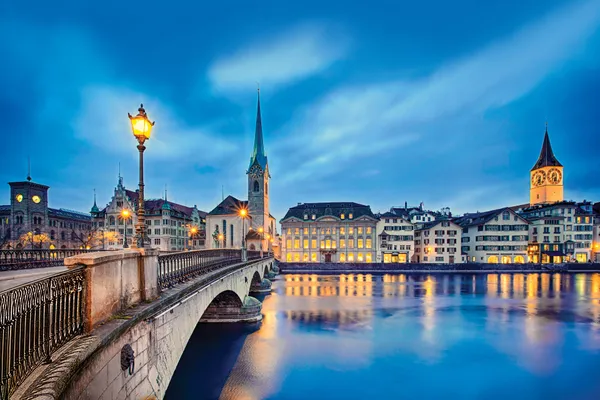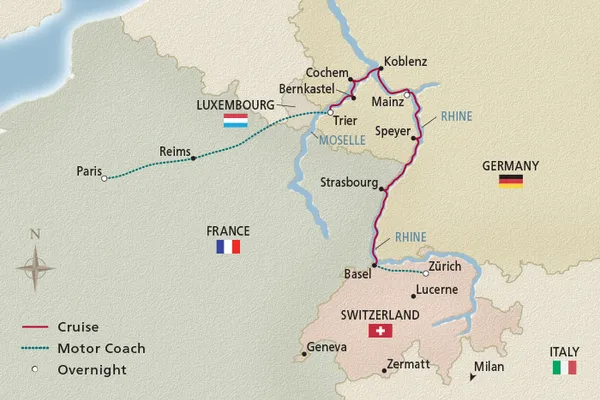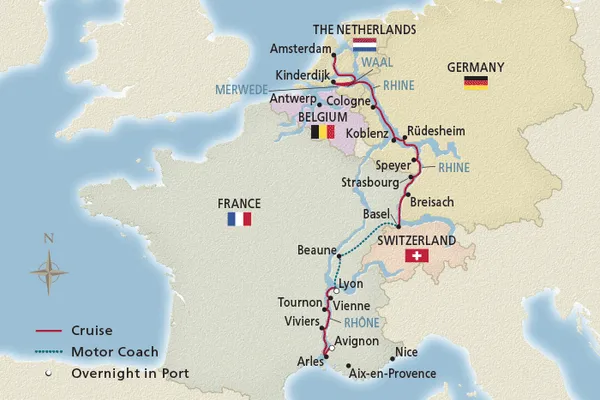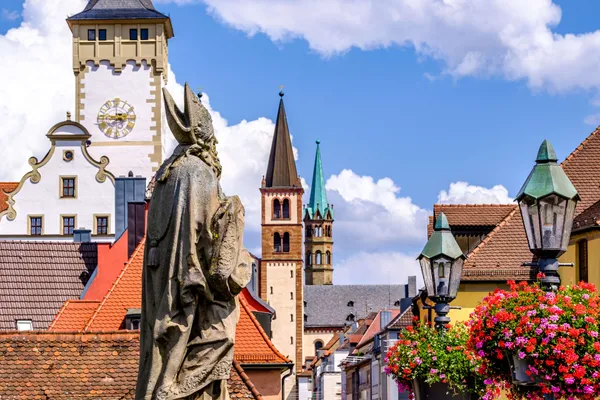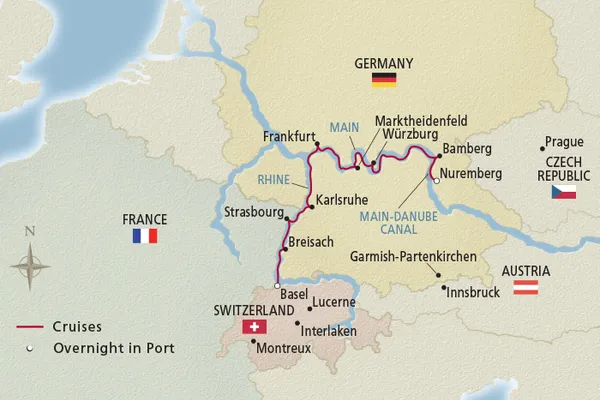
Discover the charm of Switzerland
Explore the idyllic alpine scenery, exceptional architecture and captivating art that await you in Switzerland. Read on to learn more about the iconic landmarks and distinctive culinary traditions of this multicultural country. Enhance your knowledge of Basel, Switzerland’s art capital, and delve into the country’s rich intellectual history.

Switzerland
Switzerland, a landlocked country located in central Europe, occupies 15,937 sq mi. (41,276 sq km)—roughly twice the size of the state of New Jersey. It is bordered to the west by France, to the north by Germany, to the east by Austria and Liechtenstein, and to the south by Italy.
Switzerland is one of the most mountainous countries in Europe, with more than 70 percent of its area covered by the Alps in the central and southern sections, and the Jura Mountains in the northwest. The country is also the source of many major rivers, including the Rhône, which flows into the Mediterranean Sea, and the Rhine, which empties into the North Sea.
Located at the convergence of four different types of air masses—the mild and moist air of the North Atlantic Drift, dry and cold air from the North Arctic, continental air from the east and moist and warm airflows from the Mediterranean—Switzerland’s weather patterns are characterized by great variation in temperature and precipitation. Generally speaking, the climate is moderate, with no excessive heat, cold or humidity. In summer, the daytime temperature ranges from 65 to 82°F (18 to 28°C), while in spring and autumn it ranges from 46 to 59°F (8 to 15°C). In the winter, the average range is 28 to 45°F (-2 to 7°C), although temperatures may vary widely depending on the altitude.
Despite its small size and modest population, Switzerland holds an outsized international significance, with its cities serving as global centers of industry, commerce and international diplomacy. The country’s currency is the Swiss franc (CHF), and it has four official languages—German, French, Italian and Romansh.
With its diverse cultural traditions, picturesque scenery and thriving cities, Switzerland offers visitors a wide range of attractions. Some of the county’s most notable landmarks include:
- Basel’s Old Town—With more than 200 fountains, clusters of medieval buildings and an impressive red sandstone Romanesque cathedral, Basel’s historic district features an architectural diversity that is second to none.
- Lake Zürich—Enjoy sweeping views of Zürich from its namesake lake, embarking on a scenic cruise along pristine waters surrounded by alpine splendor. Sit back and relax as you observe the beautiful surroundings.
- Lucerne’s Chapel Bridge—Originally built in the 14th century, the Chapel Bridge is the oldest wooden covered bridge in Europe, as well as the world's oldest surviving truss bridge. Spanning the Reuss River, it offers superb views of this charming Swiss city.
- The Jet d'Eau in Geneva—Situated where Lake Geneva exits as the Rhône, this towering fountain has become one of the city’s most famous landmarks. With water jetting 492 ft. (150 m) in the air, it is visible throughout the city.
- Alpine villages—Immerse yourself in the splendid vistas and rich culture of Switzerland’s charming villages. In Grindelwald, you can board a cogwheel train to Kleine Scheidegg, a breathtaking mountain pass with incredible views. Take in the pure mountain air of Zermatt, a pedestrian-only haven at the foot of the famed Matterhorn. Or, explore the pretty town of Interlaken, beautifully set between Lake Thun and Lake Brienz.

-
Cuisine—Swiss fondue
Few things are as comforting as a piping-hot bowl of fondue. This deceptively simple dish of cubed bread dipped into a container of warm melted cheese is best enjoyed in the company of loved ones, accompanied by a glass of white wine or cup of herbal tea. Declared the national dish of Switzerland by the Schweizerische Käseunion (Swiss Cheese Union) during the 1930s, this quintessential favorite has grown from a humble rural meal to a worldwide indulgence.
The origins of fondue can be traced to 18th-century Switzerland, when families in Alpine farm villages invented the dish in order to use up their old bread, excess cheese and deteriorating wine. Dipping the hard, stale bread into the cheese made it soft and delicious once more, while heating the wine along with the cheese enhanced the flavors and made both highly palatable. From these unassuming roots grew a beloved winter tradition that quickly spread across the region and beyond, with the first known written fondue recipes appearing in cookbooks published in France and Belgium.
Fondue is traditionally served in a wide, shallow earthenware pot called a caquelon. Skewers are used to dip small pieces of bread into the cheese mixture—though for only a few seconds, since any longer will cause the bread to disintegrate. One Swiss tradition involves assigning a “punishment” for accidentally dropping one’s bread into the cheese, such as buying a round of drinks or completing a dare. The dark, cheesy crust that forms on the bottom of the caquelon is called the religieuse, which is customarily scraped up at the end of the meal and shared among the diners.
The types of cheese used for fondue can vary greatly by region. Though the combination known as moitié-moitié (half-half) fondue, made up of half Gruyère and half Vacherin Fribourgeois cheese, is popular throughout Switzerland, various cantons boast their own favored iterations. In Valais, for example, Gruyère is often mixed with raclette, whereas those in Bern prefer to blend their Gruyère with Emmental (what most Americans call “Swiss cheese”). In the country’s eastern cantons, including Zürich, Appenzeller cheese is the complement of choice for the Gruyère. While various toppings and accompaniments abound, a classic fondue is sure to include white wine, garlic and a splash of kirsch.
No matter how it is prepared, you are sure to enjoy the delicious, homey flavors of this classically Swiss combination.
-
Culture—Switzerland’s art capital, Basel
Basel occupies a mere 9.21 square miles, yet within that area there are more than three dozen museums. This is to say nothing of Basel's many galleries and non-permanent exhibitions.
Among the city’s most renowned institutions is the Basel Kunstmuseum, Europe’s first art collection to be made accessible to the public (in 1661) and the largest art museum in Switzerland. Highlights include the world’s largest assemblage of paintings by members of the Holbein family and a thorough collection of works by Old Masters, which documents the development of painting in the Upper Rhine. Recent bequests have bolstered the museum’s modernist collection to such an extent that a second site, accessible by tunnel, was constructed across the street from the original building.
The Fondation Beyeler is home to an astounding collection of 19th- and 20th-century works by artists such as Paul Cézanne, Vincent van Gogh, Pablo Picasso, Mark Rothko, Joan Miró, Andy Warhol, Roy Lichtenstein, Max Ernst and many others. It was the formerly private collection of art dealers Hildy and Ernst Beyeler.
Aside from museums, the city also hosts the renowned Art Basel, an annual international art fair that serves as a showcase for contemporary art across all media. Its popularity and success have resulted in the launches of partner Art Basel fairs in Miami and Hong Kong.
-
History—3 famous Swiss scholars
Switzerland has produced many notable figures across different fields, from pioneering philosophers to legendary psychologists. The following three luminaries offer a glimpse into the remarkable contributions that Swiss scholars have made to history and culture since the eighteenth century.
Jean-Jacques Rousseau (1712-1778)
This Geneva-born philosopher was one of the most influential thinkers of the Enlightenment. Rousseau’s inquiries on freedom and the ideal state of nature were published in The Social Contract and A Discourse on Inequality. He advocated radical child-rearing ideas in Emile; or, On Education, which flipped the paradigm of the teacher as an authority figure in favor of child-centered learning. Rousseau espoused freer expressions of emotion—an idea that inspired the Romantic movement. He is famed as the philosopher of the French Revolution.Johann Ludwig Burckhardt (1784–1817)
If you have ever experienced the splendor of Petra or the Temple of Ramses at Abu Simbel, you have Johann Ludwig Burckhardt to thank for it. The Swiss explorer rediscovered these marvels after they had been abandoned for centuries.Burckhardt was born in Lausanne, and though his first language was German, he signed his letters “Jean Louis” or “John Lewis.” His identity became even more fluid when he accepted an assignment to journey from Cairo to Timbuktu. To prepare, he studied Arabic at Cambridge, wore Arabic-style clothes and traveled to Syria to immerse himself in Muslim culture. During his two years there, he posed as Ibrahim Ibn Abdallah, a persona he thought would grant him cultural access and safety as he trekked through Jordan to Cairo. After several mishaps, with the aid of a local Bedouin guide he located Petra near Wadi Musa.
When Burckhardt reached Cairo he explored the Nile but was met with hostility in Nubia and had to detour. This fortuitously led him to Abu Simbel. Burckhardt was unable to excavate the temple entrance, but his friend Giovanni Belzoni returned to Abu Simbel in 1817 and pried it open. Burckhardt never made it to Timbuktu, but his notes and manuscripts inspired the journeys of other explorers for generations to come.
Carl Gustav Jung (1875–1961)
Jung was the founder of analytic psychology. He was deeply influenced by Freud’s theory of psychoanalysis, and the two collaborated for five years, but ultimately had a falling out over their theoretical differences. Jung’s concepts of introverted and extroverted personalities, archetypes and the collective unconscious helped shape modern psychology, psychiatry, art, literature and religion.
Switzerland Highlights
A journey through Switzerland promises exceptional scenic beauty, historic charm and lively cities that seamlessly blend the old and new. Here are some sample highlights you may experience on your voyage through this enchanting country:
- Zürich’s Fraumünster, with stained glass by Marc Chagall
- Cabaret Voltaire, the birthplace of the Dada movement
- Kunsthaus Zürich, Switzerland’s largest art museum
- Charming alpine villages with stunning panoramic views
- Lucerne’s iconic 14th-century Chapel Bridge
- Local spirits like kirsch, a beloved fruit liqueur
- Basel Münster, the city’s landmark cathedral
- Fischmarktbrunnen, a remarkable Gothic fountain in Basel
- Scenic train rides through snowcapped mountains
- An authentic fondue dinner of warm, melted cheese
Destination Insight Videos
-
Journeying to Switzerland - Black Forest to Basel and Lucerne (16:16)
Today’s explorations take Alastair to Germany’s legendary Black Forest, where he rides an electric bike through rolling fields and along woodland trails. From here, he sails to the Swiss city of Basel for a behind-the-scenes tour of our local office. Concluding his journey in Lucerne, one of Switzerland’s most scenic cities, he meets with his friend Karine Hagen, Executive Vice President at Viking, and reflects on his incredible travels along the Rhine River.
-
Savor regional specialities from Breisach to Basel (27:24)
Sail on with Jean as she travels across the river from French Alsace to Breisach, Germany, a gateway to the Black Forest. Famous for its vineyards, Breisach is perhaps best known for spätburgunder, a German pinot noir. Follow along with Jean as she tastes this varietal and learns about organic wine production at the Missbach winery, family-owned since 1758. Next, Jean ventures to the charming town of Staufen to tour the Schladerer distillery, a family-run business that has been practicing their craft for nearly two centuries. Gain insight into the innovative process they use to produce their schnapps, a delicious clear brandy distilled with fruit. Afterward, Jean concludes her 8-day voyage in snowy Basel, Switzerland, where she visits her final Christmas market and indulges in some traditional Swiss fondue.
-
Take a musical journey through Lucerne with The Lucerne Festival (14:33)
Journey with us to the charming Swiss city of Lucerne, home of the famed Lucerne Festival. Bringing together prominent figures in orchestral and chamber music, the festival is one of the leading international celebrations of classical music.
-
At Home in Basel with Joost (18:36)
Join Joost Ouendag, VP of Product Development at Viking, as he shares some of his favorite things to do, see and eat in Basel. As an experienced traveler who was born in the Netherlands, Joost answers viewers' questions while exploring aspects of Basel that are sure to surprise and delight you.
Switzerland Travel FAQ
All-Inclusive Itineraries—Switzerland
Choose one of our enriching, all-inclusive voyages and discover the many benefits of exploring in Viking comfort.



